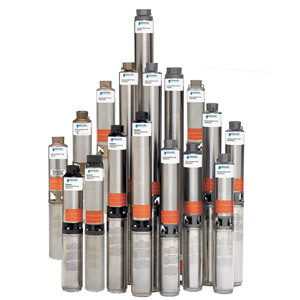
|
| Chris Preston |
Chris Preston at Xylem has an official job title of Product Manager, but what he’s really good at is problem solving. As one of the speakers at this year’s National Ground Water Association Groundwater Expo in Nashville, he will be sharing his knowledge about troubleshooting submersible and jet pumps.
Most drillers and well maintenance technicians run into the same general set of problems over and over; here is an overview of the ones Preston says you’re most likely to run into and first steps you can take to resolve them.
Improperly-sized pumps: “Selecting the right item depends on knowing the application and duty point,” Preston said. “It’s not a one-size-fits-all situation. You really have to understand the needs of the house and what the well is capable of, because you can’t try to use more than what the well will put out.
“In addition, if the pump and tank are not sized correctly together for the application you can create a short cycle condition, which can cause unnecessary repairs and expense. If you’re too far right on the curve, the higher flow condition might not make enough pressure to turn off the switch and the pump will continue to run,” Preston said.
Improper installation: "Identify if this is a new installation or one that has been in place for years. If it is new and you are having failures, evaluate the right pump or motor has been selected and pay close attention to the plumbing and wiring to ensure it was installed per manufacturer’s recommendations.
Wrong voltage: “If the voltage is too high, it means it speeds up the motor causing a pump overload condition, which can result in potential premature product failure.”

|
|
Proper installation and sizing are critical for optimum performance of submersible pumps. |
Before you take a closer look at the pump, though, Preston offers a few cautions. First and foremost, you should use caution about working with live power to prevent potential injuries. Then, you should learn more about your specific pump. “A good place to look is on the motor’s name plate. Once you find that out, you can usually go to the manufacturer’s website and they have a lot of information,” he said. They often even have service manuals online.
“Consider the motor’s insulation and look at the wire. If the wire has damaged insulation, it could be a potential safety hazard,” he said. It’s also important to know the amperage of the motor when it’s running; it will be very high if the pump is locked up. It should be within plus or minus 10 percent.
“Make sure the shafts spin,” Preston said. “If they don’t, it could mean bad bearings that need to be replaced, or a foreign object could be jamming it up.”
Some causes of pump failure can’t be avoided, such as damage by lightning. There’s almost nothing that can be done to completely protect against this possibility, although relays can minimize the effects.
When it comes to troubleshooting pumps, a major portion of the responsibility comes from choosing the right pump for the property. Very often, homeowners don’t discover that the pump in their well is the wrong one for the job until the equipment fails, but this represents an opportunity to start over with the right equipment. “Sometimes people just aren’t educated when they choose the pump, which can lead to problems. Trying to cut costs can lead to problems later,” Preston said. “For example, undersize wire contains less copper, which equals higher resistance and lowers the voltage that the motor receives leading to reduced performance and efficiency.”
Another good place to look is at the mechanical component of the pump; evaluate the outside of the pump for any signs that something might be wrong. “Look for discoloration, which may be caused by heat. Pitting may be caused by chemicals. And large pieces of debris can cause the pump to lock up,” said Preston.
Although there’s a lot that you can do to take an overview approach to troubleshooting, it’s also important to know when you’re in over your head and to ask for help. Most manufacturers have technical support you can call for help, but Preston advises having as much information at hand as possible before you call, including model numbers, brands and voltage/amperage data if available. “Take pictures, too,” Preston said. “These days, the tech support reps for a lot of companies accept photos by email or text message.”
At the same time, while you shouldn’t be ashamed if you don’t know what you’re dealing with, you should also admit that you don’t know. “Be honest with the tech support reps and the people you call for help, whether it’s an electrician, pump installer or dealer. So many people are afraid to admit that they don’t really know, but it would save time for everyone if that was out of the way up front,” Preston said.



Report Abusive Comment